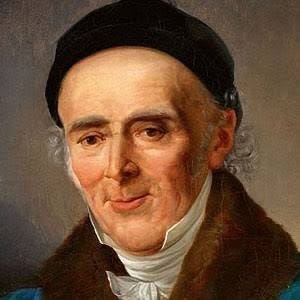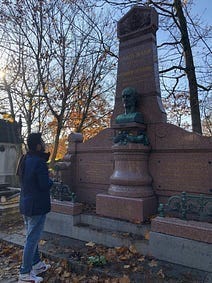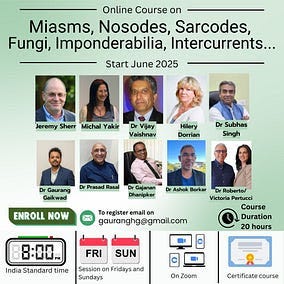DECODING MIASMS in Homeopathic Analysis
Dear Homeopathy Lovers,
One of the most interesting and important topics in homeopathy is Miasms and their application in clinical practice. During the early years of my homeopathic journey, this subject was quite confusing. It took me several years—through analyzing my own failed cases as well as those of my colleagues and teachers—to truly understand the practical application of miasms.
I discovered the importance of delving deep into the family and past history of the individual. It’s especially interesting to consider current research on familial and genetic patterns, yet Master Hahnemann addressed these concepts many years ago, supported by clinical evidence and an understanding of deeper miasmatic patterns. As our classical homeopathic masters often said, it’s the study of the soil. I’ve found that there are many physical and mental patterns to consider when understanding miasms in patients.
Attached below are some maps we’ve tried to formulate, which may be useful for our colleagues in clinical practice. (References: The Chronic Diseases by Hahnemann, The Chronic Miasms by J.H. Allen, A Comparison of Chronic Miasms by Phyllis Speight, and my clinical experiences.)
MIASMATIC PRESCRIPTION: Understanding miasms is essential for recognizing and treating disease patterns. Miasmatic prescribing, an often-overlooked aspect of homeopathy in recent decades, has been refined by many classical homeopaths in India. This chapter delves into miasms from Hahnemannian times to the present, focusing on female cases and clinical indications for each miasm. It serves as a brief introduction to miasmatic prescribing.
“Useful to the physician in assisting him to cure are the particulars of the most probable exciting cause of the acute disease, as also the most significant points in the whole history of the chronic disease, to enable him to discover its fundamental cause, which is generally due to a chronic miasm. In these investigations, the ascertainable physical constitutions of the patients (especially when the disease is chronic), his moral and intellectual character, his occupation, mode of living and habits, his social and domestic relations, his age, sexual functions, & etc., are to be taken into consideration.” - Aphorism 5 from Organon
Fundamental Causes of Chronic Miasms:
Miasm - Cutaneous presentation
Psora: Itch, eruptions, herpes, scabies, tetter.
Sycosis: Condylomata, gleet, growth.
Syphilis: Ulcer, bubo, destruction.
Miasms lie dormant within the body, awaiting activation by various factors that can disrupt health and lead to the emergence of chronic disease. Psora, derived from the term 'tsorat' meaning groove, fault, or stigma, is considered the hydra-headed monster and the fundamental cause of all chronic diseases.
Miasmatic Theories by Modern Masters:
John Henry Allen introduced the concept of pseudo-psora, which later became recognized as the tubercular miasm.
Dr. Kent further developed the idea of psora, linking it to impure thoughts and materialistic tendencies as precursors to physical degeneration, thereby introducing metaphysical concepts into miasm theory.
According to H.A. Roberts, miasm is disturbed assimilation.
• Psora - deficiency, functional
• Sycosis - excess, overgrowth
• Syphilis - disorganized, deformity
Thomas Pablo Paschero linked genetic theories with the concept of miasm.
• Psora – Morbid derangement of the whole genome. Supernormal or hyperergic response to functional, no pathology. (allergy)
• Sycosis – Excess
• Syphilis – Perversion
O. A. Julian connected genetics, biochemistry, and molecular biology to miasm theory.
H. Montfort–Cabello linked the disturbed repair mechanism of cells and tissues to a concept termed “disrepair.”
• Psora – Defect (hypertension, asthma)
• Syphilis – Apoptosis (Alzheimer’s, ulcerative colitis)
• Sycosis – Defect in control of cell division – mutation – tumor production – fibrous tissue formation
For more detailed information on the various types of miasms, including charts, refer to this PDF, which provides a visual guide to understanding miasms and their presentations.
Upcoming Course on Miasms, Nosodes, Sarcodes, Fungi, Imponderabilia & Intercurrent Remedies
What to do when well-selected remedies fail?
Weekend classes: Fridays & Sundays at 8 pm IST
Starting: 20 June 2025
Platform: Live on Zoom
Access: Recordings available for 2 years
What you'll learn:
Miasmatic theory and modern applications
Nosodes and their clinical applications
Sarcodes in chronic case management
Bowel nosodes and gut dysbiosis
Tautopathic prescribing principles
Rare remedies including actinoids & lanthanoids
The world-renowned faculty includes Michal Yakir, Dr. Vijay Vaishnav, Dr. Ashok Borkar, Dr. Subhas Singh, Dr. Gaurang Gaikwad, Patricia Hatherly, Angelica Lemke, Luke Norland, and many more experts!
Early bird discount available until April 30th!
Send a message to reserve your spot or for more details!
WhatsApp: +91 9867584902
Email: chiyabhandari@gmail.com
Transform your practice with advanced homeopathic strategies!






